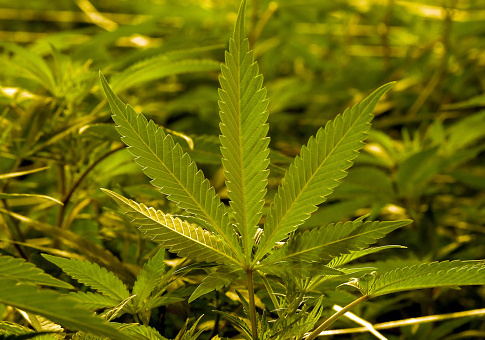Two new studies, released Monday in the American Medical Association's journal of internal medicine, provide new evidence suggesting legalization of medical and recreational marijuana reduced opioid prescription rates, an important development as America continues to face a crisis of opioid overdose deaths.
The two studies use data from the Medicaid and Medicare Part D programs to analyze the impact that marijuana legalization has had on opioid prescription. Currently, 30 states and the District of Columbia have laws that permit the prescribing of marijuana for medical purposes in some form or another. A further eight states permit recreational use of marijuana, with California beginning weed sales in January of this year.
Medicaid, which covers low-income and disabled Americans, saw a significant drop in opioid prescriptions in those states that had implemented medical and recreational marijuana laws. Examining the period between 2011 and 2016, during which time Medicaid was expanded under Obamacare, authors Jason Hockenberry and Hefei Wen found that medical marijuana laws were associated with an average reduction in the opioid prescription rate of 5.88 percent. States with recreational marijuana laws saw an average reduction of 6.38 percent.
That adds up to a substantial decrease in the rate of opioid prescription. Hockenberry and Wen estimate medical marijuana cuts opioid prescription rates by 39.41 prescriptions per 1,000 Medicaid states enrollees, and recreational marijuana cuts prescription rates by a similar rate. For context, there were about 665 opioid prescriptions per 1,000 people in the U.S. in 2016.
Recreational marijuana was even associated with a reduction in Medicaid spending. Spending on prescription opioids fell an average of 9.78 percent in those states with recreational marijuana laws, adding up to an annual savings of 1,815 dollars per 1,000 enrollees.
Another study found a similar impact on Medicare Part D opioid prescriptions. Authors Ashley Bradford et. al. focused on medical marijuana laws as they affected prescriptions issued under the national insurance program for those over the age of 65. They also examined the differences between states that allow for home cultivation of medical marijuana and states which have medical marijuana dispensaries.
As with the Medicaid study, Bradford et. al. found that medical marijuana was associated with lower opioid prescription rates. Specifically, states with dispensaries cut the number of opioids dispensed cut by 3.742 million doses on average. States with medical marijuana cultivation laws saw a drop of 1.792 million doses on average. This study, drawing on a data set of Americans over 65, may be more restricted in its generalizability than some others.
It is important to note that prescription opioids are, by-and-large, not directly driving opioid overdose deaths. According to Dr. Sally Satel, a practicing psychiatrist and resident scholar at the American Enterprise Institute, the available literature shows that individuals who are prescribed opioid painkillers do not tend to become addicted to them.
However, licitly prescribed opioids may be diverted for illicit use, which may promote addiction and eventual overdose death. The 2016 National Survey on Drug Use and Health found that a majority of those self-reporting abusing prescription painkillers obtained them from a friend or relative, who may have been licitly prescribed the drug. Some 14,000 people died in 2016 from natural and semisynthetic opioids, which include prescription drugs like morphine, oxycodone, and hydrocodone.
In light of this, both recently published studies provide some of the first credible research to support the idea that medical or recreational marijuana legalization may cut prescriptions, which could in turn help assuage the opioid crisis.
"For many reasons, ranging from significant barriers to research on cannabis and cannabinoids to impatience, cannabis policy has raced ahead of cannabis science in the United States," write Drs. Kevin Hill and Andrew Saxon in an invited commentary on the two new studies.
"For science to guide policy, funding the aforementioned studies must be a priority at the federal and state level. Many companies and states (via taxes) are profiting from the cannabis industry while failing to support research at the level necessary to advance the science. This situation has to change to get definitive answers on the possible role for cannabis in the opioid crisis, as well as the other potential harms and benefits of legalizing cannabis," the two add.
